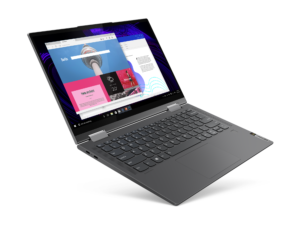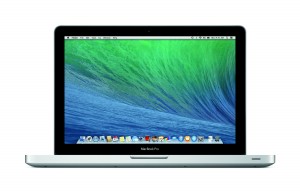Do I see regular computing target i86 and ARM microarchitectures?

Lenovo Flex 5G / Yoga 5G convertible notebook which runs Windows on Qualcomm ARM silicon – the first laptop computer to have 5G mobile broadband on board
Increasingly, regular computers are moving towards the idea of having processor power based around either classic Intel (i86/i64) or ARM RISC microarchitectures. This is being driven by the idea of portable computers heading towards the latter microarchitecture as a power-efficiency measure with this concept driven by its success with smartphones and tablets.
It is undertaking a different approach to designing silicon, especially RISC-based silicon, where different entities are involved in design and manufacturing. Previously, Motorola was taking the same approach as Intel and other silicon vendors to designing and manufacturing their desktop-computing CPUs and graphics infrastructure. Now ARM have taken the approach of designing the microarchitecture themselves and other entities like Samsung and Qualcomm designing and fabricating the exact silicon for their devices.
A key driver of this is Microsoft with their Always Connected PC initiative which uses Qualcomm ARM silicon similar to what is used in a smartphone or tablet. This is to have the computer able to work on basic productivity tasks for a whole day without needing to be on AC power. Then Apple intended to pull away from Intel and use their own ARM-based silicon for their Macintosh regular computers, a symptom of them going back to the platform’s RISC roots but not in a monolithic manner.
As well, the Linux community have established Linux-based operating systems on ARM microarchitectore. This has led to Google running Android on ARM-based mobile and set-top devices and offering a Chromebook that uses ARM silicon; along with Apple implementing it in their operating systems. Not to mention the many NAS devices and other home-network hardware that implement ARM silicon.
Initially the RISC-based computing approach was about more sophisticated use cases like multimedia or “workstation-class” computing compared to basic word-processing and allied computing tasks. Think of the early Apple Macintosh computers, the Commodore Amiga with its many “demos” and games, or the RISC/UNIX workstations like the Sun SPARCStation that existed in the late 80s and early 90s. Now it is about power and thermal efficiency for a wide range of computing tasks, especially where portable or low-profile devices are concerned.
Software development
I will see an expectation for computer operating systems and application software to be written and compiled for both classic Intel i86 and ARM RISC microarchitectures. This will require software development tools to support compiling and debugging on both platforms and, perhaps, microarchitecture-agnostic application-programming approaches. It is also driven by the use of ARM RISC microarchitecture on mobile and set-top/connected-TV computing environments with a desire to allow software developers to have software that is useable across all computing environments.
Some software developers, usually small-time or bespoke-solution developers, will end up using “managed” software development environments like Microsoft’s .NET Framework or Java. These will allow the programmer to turn out a machine-executable file that is dependent on pre-installed run-time elements for it to run. These run-time elements will be installed in a manner that is specific to the host computer’s microarchitecture and make use of the host computer’s needs and capabilities. These environments may allow the software developer to “write once run anywhere” without knowing if the computer the software is to run on uses an i86 or ARM microarchitecture.
There may also be an approach towards “one-machine two instruction-sets” software development environments to facilitate this kind of development where the goal is to simply turn out a fully-compiled executable file for both instruction sets.
It could be in an accepted form like run-time emulation or machine-code translation as what is used to allow MacOS or Windows to run extant software written for different microarchitectures. Or one may have to look at what went on with some early computer platforms like the Apple II where the use of a user-installable co-processor card with the required CPU would allow the computer to run software for another microarchitecture and platform.
Computer Hardware Vendors
For computer hardware vendors, there will be an expectation towards positioning ARM-based silicon towards high-performance power-efficient computing. This may be about highly-capable laptops that can do a wide range of computing tasks without running out of battery power too soon. Or “all-in-one” and low-profile desktop computers will gain increased legitimacy when it comes to high-performance computing while maintaining the svelte looks.
Personally, if ARM-based computing was to gain significant traction, it may have to be about Microsoft encouraging silicon vendors other than Qualcomm to offer ARM-based CPUs and graphics processors fit for “regular” computers. As well, Microsoft and the Linux community may have to look towards legitimising “performance-class” computing tasks like “core” gaming and workstation-class computing on that microarchitecture.
There may be the idea of using 64-bit i86 microarchitecture as a solution for focused high-performance work. This may be due to a large amount of high-performance software code written to run with the classic Intel and AMD silicon. It will most likely exist until a significant amount of high-performance software is written to run natively with ARM silicon.
Conclusion
Thanks to Apple and Microsoft heading towards ARM RISC microarchitecture, the computer hardware and software community will have to look at working with two different microarchitectures especially when it comes to regular computers.



